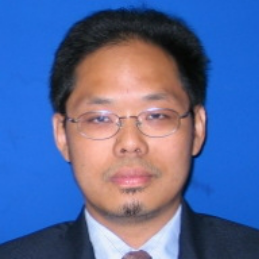International Journal of Information Technology and Computer Science (IJITCS)
IJITCS Vol. 4, No. 11, 8 Oct. 2012
Cover page and Table of Contents: PDF (size: 637KB)
Downlink and Uplink Physical Channels in Long Term Evolution
Full Text (PDF, 637KB), PP.1-10
Views: 0 Downloads: 0
Author(s)
Index Terms
LTE, Downlink Physical Channel, Uplink Physical Channel
Abstract
Long Term Evolution (LTE) defines a number of physical channels to carry information blocks received from the MAC and higher layers. This paper presents two types of Physical channels: the first type is downlink physical channels which consist of Physical Broadcast Channel (PBCH), Physical Downlink Shared Channel (PDSCH), Physical Multicast Channel (PMCH), Physical Downlink Control Channel (PDCCH), Physical Control Format Indicator Channel (PCFICH) and Physical Hybrid ARQ Indicator Channel (PHICH). The second type of Physical channels is uplink physical channels which consist of Physical Uplink Shared Channel (PUSCH), Physical Uplink Control Channel (PUCCH) and Physical Random Access Channel (PRACH). This paper also highlights the structure of PDSCH and PUSCH, discuss the algorithms of the two types of physical channel and each of its features. The aim of this paper is to discuss the well-designed PHY Channels which provide high cell-edge performance with specific features, such as dynamic bandwidth allocation to users, the design of reference signals and control channels. These channels take into account a more challenging path loss and interference environment at the cell edge.
Cite This Paper
A. Z. Yonis, M. F. L. Abdullah, "Downlink and Uplink Physical Channels in Long Term Evolution", International Journal of Information Technology and Computer Science(IJITCS), vol.4, no.11, pp.1-10, 2012. DOI:10.5815/ijitcs.2012.11.01
Reference
[1]3GPP Technical Specifi cation, TS 36.211, “Evolved Universal Terrestrial Radio Access (E-UTRA); Physical channels and modulation,” 3GPP, v 8.4.0, Sep. 2008.
[2]3GPP Technical Specification, TS 36.214, “Evolved Universal Terrestrial Radio Access (E-UTRA); Physical layer measurements,” 3GPP, v 8.4.0, Sep. 2008.
[3]L. Korowajczuk, “LTE, WiMAX and WLAN network design, optimization and performance analysis,” John Wiley, USA, pp.447-448, 2011.
[4]E. Dahlman, S. Parkvall, and J. Sköld., “4G LTE/LTE-Advanced for Mobile Broadband,” Elsevier, UK, pp.143-204, 2011.
[5]P. Lescuyer and T. Lucidarme, “Evolved Packet System (EPS) The LTE and SAE Evolution of 3G UMTS,” John Wiley, pp.124, 2008.
[6]Motorola, ‘R1-072671: Uplink Channel Interleaving’, www.3gpp.org, 3GPP TSG RAN WG1, meeting 49bis, Orlando, USA, June 2007.
[7]S. Sesia, I. Toufik and M. Baker, “LTE – the UMTS long term evolution from theory to practice”, John Wiley, UK, pp. 344, 2011.
[8]3GPP Technical Specification, TS 36.211, “Evolved Universal Terrestrial Radio Access (E-UTRA); Physical channels and modulation,”’ 3GPP, v 8.4.0 Sep. 2008.
[9]H. Holma and A. Toskala, “LTE for UMTS evolution to LTE-Advanced,” 2nd edit, John Wiley, UK, pp.98-99, 2011.
[10]3GPP Tdoc R1–080931, “ACK/NACK channelization for PRBs containing both ACK/NACK and CQI,”’ Nokia Siemens Networks, Nokia, Texas Instruments.
[11]H. Holma and A. Toskala, “LTE for UMTS –OFDMA and SC-FDMA based radio access,” John Wiley, UK, pp.109, 2009.
[12]M. Ergen, “Mobile Broadband Including WiMAX and LTE,” Springer USA, pp.393-395, 2009.

